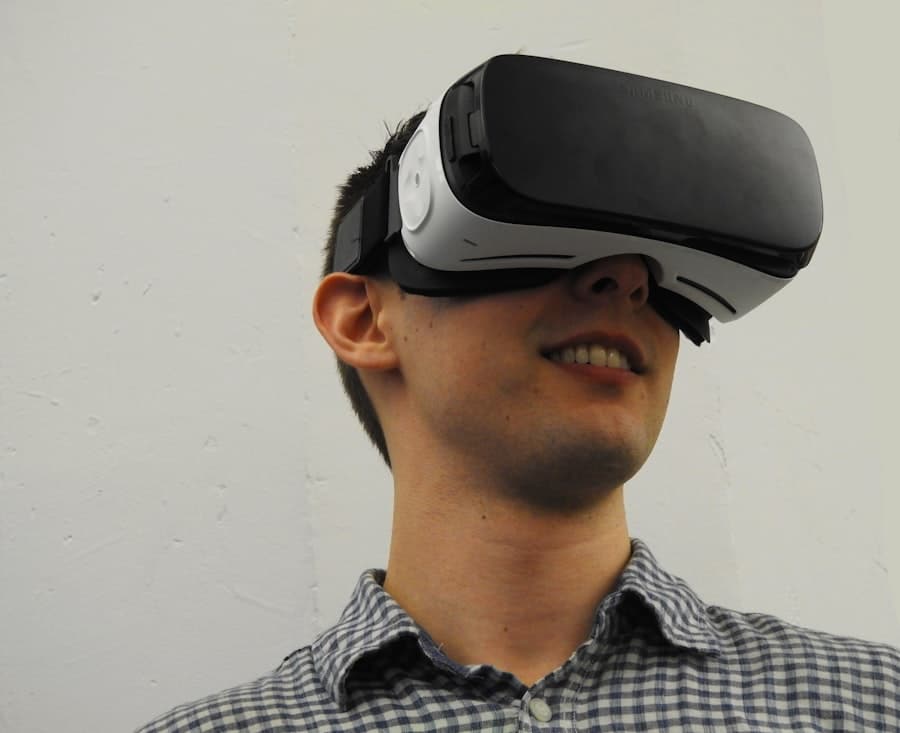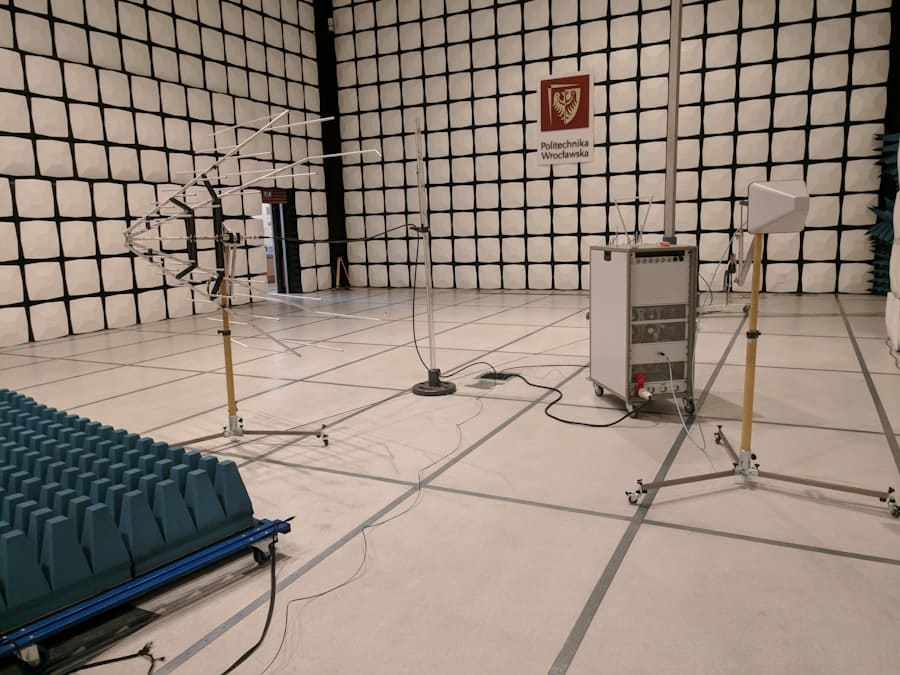The advent of technology has revolutionized various sectors, and education is no exception. Virtual labs have emerged as a transformative tool in science education, providing students with the opportunity to engage in scientific experiments and simulations without the constraints of a physical laboratory. These digital platforms allow learners to conduct experiments, analyze data, and explore scientific concepts in an interactive environment.
By leveraging advanced software and online resources, virtual labs create a dynamic learning experience that can cater to diverse educational needs. The significance of virtual labs extends beyond mere convenience; they embody a paradigm shift in how science is taught and learned. Traditional laboratory settings often present challenges such as limited access to equipment, safety concerns, and logistical issues related to space and materials.
Virtual labs mitigate these challenges by offering a safe, controlled environment where students can experiment freely. This innovative approach not only enhances understanding but also fosters a sense of curiosity and engagement among learners, making science more accessible and enjoyable.
Key Takeaways
- Virtual labs offer a new way to conduct science experiments and simulations in a digital environment, providing students with a hands-on learning experience.
- Students with disabilities can benefit from virtual labs by accessing interactive and adaptable learning materials that cater to their specific needs and abilities.
- Virtual labs help students overcome physical limitations by providing a safe and accessible platform for conducting experiments and exploring scientific concepts.
- Remote learners can enhance their access to science education through virtual labs, which offer flexibility and the ability to engage in experiments from any location.
- Virtual labs address cost and resource limitations by reducing the need for expensive equipment and materials, making science education more accessible to a wider range of students.
The Benefits of Virtual Labs for Students with Disabilities
For students with disabilities, traditional science education can pose significant barriers. Physical limitations may restrict their ability to participate fully in hands-on experiments, leading to feelings of exclusion and frustration. Virtual labs offer a solution by providing an inclusive platform that accommodates various needs.
These digital environments can be tailored to suit individual requirements, allowing students with disabilities to engage with scientific concepts at their own pace and in a manner that suits their learning style. Moreover, virtual labs often incorporate assistive technologies that enhance accessibility. Features such as screen readers, adjustable interfaces, and customizable controls enable students with visual or motor impairments to navigate experiments effectively.
For instance, a student with limited mobility can manipulate virtual equipment using adaptive devices or voice commands, ensuring they can participate in experiments that would otherwise be challenging or impossible in a traditional lab setting. This level of inclusivity not only empowers students but also promotes a sense of belonging within the scientific community.
Overcoming Physical Limitations with Virtual Labs
Physical limitations can significantly hinder a student’s ability to engage in hands-on science education. In traditional laboratory settings, students may struggle with tasks that require fine motor skills or physical strength, which can lead to disengagement from the learning process. Virtual labs effectively eliminate these barriers by allowing students to interact with simulations that replicate real-world scientific phenomena without the need for physical manipulation of equipment.
For example, consider a student with a physical disability who wishes to conduct an experiment on chemical reactions. In a conventional lab, this student might face challenges in handling glassware or chemicals safely. However, in a virtual lab environment, they can simulate the entire experiment using digital tools that replicate the chemical processes without any risk.
Enhancing Access to Science Education for Remote Learners
The rise of remote learning has highlighted the importance of accessible educational resources, particularly in science education. Virtual labs play a crucial role in bridging the gap for students who may not have access to physical laboratories due to geographical constraints or other factors. By providing online platforms for experimentation, virtual labs ensure that all students, regardless of their location, can engage with scientific concepts and practices.
Remote learners can benefit from the flexibility that virtual labs offer. They can access experiments at any time and from any location, allowing them to fit their studies around other commitments or personal circumstances. For instance, a student living in a rural area may not have access to a well-equipped science lab at their school.
However, with virtual labs, they can conduct experiments and explore scientific concepts from home, ensuring they receive a comprehensive education that aligns with their peers in urban settings.
Addressing Cost and Resource Limitations with Virtual Labs
One of the significant challenges faced by educational institutions is the cost associated with maintaining physical laboratories. The expenses related to equipment procurement, maintenance, and safety compliance can be prohibitive, particularly for underfunded schools. Virtual labs present a cost-effective alternative by reducing the need for physical resources while still providing high-quality educational experiences.
By utilizing virtual labs, schools can allocate their limited budgets more effectively. Instead of investing heavily in laboratory equipment that may only be used occasionally, educators can focus on integrating virtual lab experiences into their curricula. This approach not only saves money but also allows for a broader range of experiments and simulations that might not be feasible in a traditional lab setting due to resource constraints.
For example, complex experiments involving expensive or hazardous materials can be simulated virtually, providing students with valuable learning experiences without the associated costs.
The Role of Virtual Labs in Inclusive Science Education
Inclusive education aims to provide equitable learning opportunities for all students, regardless of their backgrounds or abilities. Virtual labs play a pivotal role in this endeavor by creating an environment where every student can participate meaningfully in science education. By accommodating diverse learning needs and preferences, virtual labs foster an inclusive atmosphere that encourages collaboration and engagement among students.
In addition to supporting students with disabilities, virtual labs also cater to different learning styles. Visual learners can benefit from interactive simulations that illustrate complex concepts through animations and graphics, while auditory learners can engage with narrated explanations and discussions within the virtual environment. This adaptability ensures that all students have access to the resources they need to succeed in their scientific studies, promoting a culture of inclusivity within the classroom.
Implementing Virtual Labs in Science Curricula
Integrating virtual labs into science curricula requires careful planning and consideration from educators. It is essential to align virtual lab experiences with learning objectives and standards to ensure that they complement traditional teaching methods effectively. Educators must also provide adequate training for both teachers and students to maximize the benefits of these digital tools.
For instance, teachers can introduce a concept through a virtual simulation before conducting a related physical experiment in the lab. This method allows students to visualize the underlying principles before applying them practically, reinforcing their understanding and retention of the material.
Additionally, educators should encourage collaborative projects that utilize virtual labs, fostering teamwork and communication skills among students as they work together on scientific inquiries.
The Future of Virtual Labs in Science Education
As technology continues to evolve, the future of virtual labs in science education looks promising. Advancements in artificial intelligence (AI), augmented reality (AR), and virtual reality (VR) are set to enhance the capabilities of virtual labs further. These technologies can create immersive learning experiences that simulate real-world scientific environments more accurately than ever before.
For example, VR technology could allow students to explore complex biological systems or chemical reactions in three-dimensional space, providing a deeper understanding of intricate processes. AI-driven virtual labs could offer personalized learning experiences by adapting simulations based on individual student performance and preferences. As these technologies become more accessible and affordable, we can expect an increasing number of educational institutions to adopt virtual labs as integral components of their science curricula.
In conclusion, the integration of virtual labs into science education represents a significant advancement in making learning more inclusive, accessible, and engaging for all students. By addressing barriers related to physical limitations, resource constraints, and geographical challenges, virtual labs are poised to play an essential role in shaping the future of science education for generations to come.
In the context of enhancing science education accessibility, virtual labs play a crucial role by providing students with the opportunity to conduct experiments and explore scientific concepts without the need for physical lab space or equipment. This is particularly beneficial for remote learners and institutions with limited resources. A related article that delves into the technological advancements supporting such educational tools is The Ultimate Guide to the Best Lighting Design Software of 2023. This article explores how innovative software solutions are transforming various fields, much like how virtual labs are revolutionizing science education by making it more accessible and inclusive.
FAQs
What are virtual labs?
Virtual labs are online platforms that simulate physical laboratory experiments and allow students to perform scientific experiments and explore concepts in a virtual environment.
Why are virtual labs important for science education accessibility?
Virtual labs provide access to laboratory experiences for students who may not have access to physical labs due to factors such as distance, cost, or time constraints. They also allow students with disabilities to participate in hands-on science experiments.
How do virtual labs enhance science education?
Virtual labs provide a safe and controlled environment for students to conduct experiments, make observations, and analyze data. They also offer the opportunity for students to repeat experiments and explore concepts at their own pace.
What are the benefits of using virtual labs in science education?
Some benefits of using virtual labs in science education include cost savings, increased accessibility, the ability to conduct experiments that may be too dangerous or expensive in a physical lab, and the opportunity for students to practice and develop their scientific skills.
Are virtual labs a substitute for physical labs?
While virtual labs can provide valuable experiences and opportunities for learning, they are not a complete substitute for physical labs. Physical labs offer unique hands-on experiences and opportunities for students to develop practical laboratory skills.



